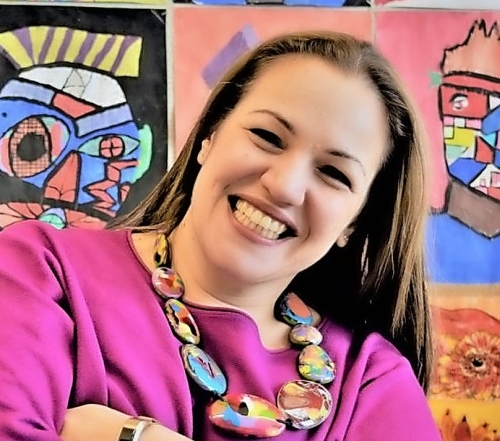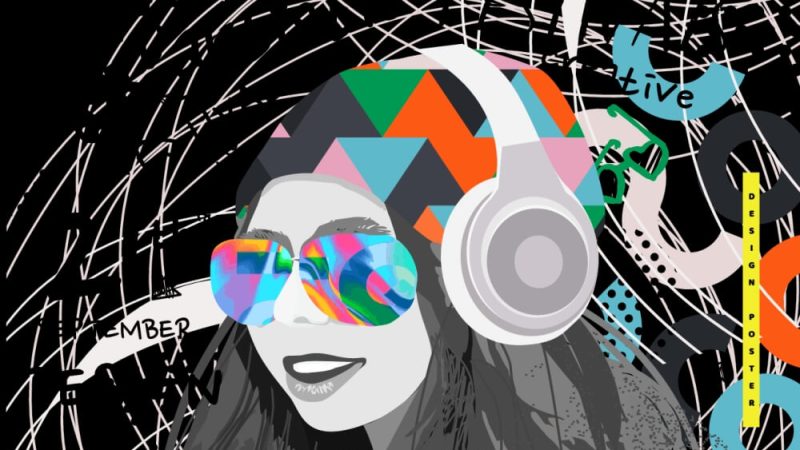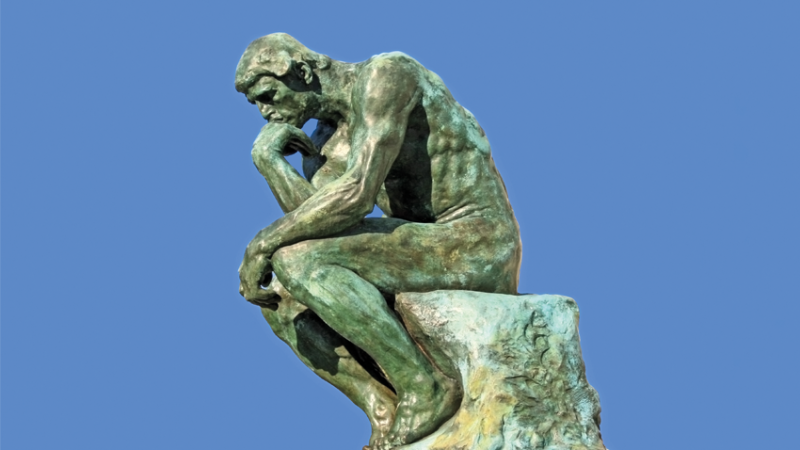Arts education – Why lessons in creativity are more important than ever
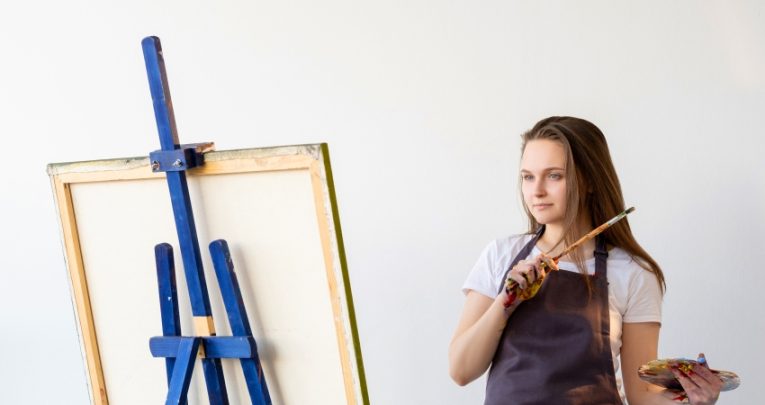
Andria Zafirakou makes the case for why, post-pandemic and amid the cost of living crisis, students need more than ever the skills that only creative subjects can provide…
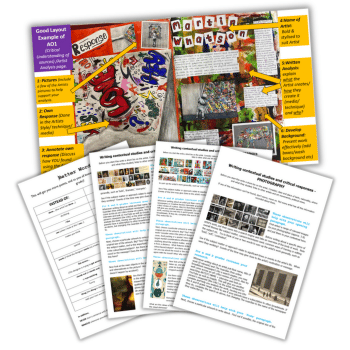
There’s always something magical about the start of a new academic year. I’ve now been teaching for 17 years, but still get that feeling of excitement and anticipation all teachers feel when September arrives.
When I sit at my desk staring around the space – this art room that’s been my second home – I can’t help but reflect on the extraordinary teaching year that’s just passed. I know I’m not alone in finding it one of the most surreal years of teaching I’ve ever experienced – a period in which ‘returning to normal’ after the pandemic was much more challenging for young people than expected.
Tip of the iceberg
Its effects on the wellbeing of our young people could be easily demonstrated, firstly by the changes in behaviour and attitudes of the many young people who have struggled to integrate back into their school community and routines.
We have also seen lasting impact in the decline of some students’ communication and oracy skills – possibly due to enforced mouth covering and a resulting loss in speech confidence. It could also be attributed to the experience of online learning during lockdown, when students’ opportunities to talk freely with their peers was significantly reduced.
Yet the most significant challenge we’ve had to come to terms with is the knowledge that this is just the beginning – only the tip of the iceberg, with the worst yet to come. Thousands of schools across the UK have already started to feel and see the devastating damage and effects that the cost of living crisis in the UK is having on young people in our communities, which can’t help but affect their wellbeing.
With families struggling to budget and survive, we can see the ripple effects starting to enter our school gates. Dirty, worn-out uniforms and emptier than usual lunch boxes are fast becoming a common and noticeable sight. So too are the more serious, yet less outwardly visible symptoms of frustration, hunger, anger, neglect, anxiety, stress, withdrawal and depression.
These are all a direct response to chaos and challenges that our young people are experiencing at home, leading to significant learning and wellbeing challenges – especially for our most vulnerable children.
“My work is just as good”
That’s why the case for practising creative and practical subjects in our schools must be made stronger than ever before. Because it’s through these that we’ll be able to help build the confidence, resilience, communication and self-regulation abilities our young people will need to cope with the challenges that lie ahead of them.
I can still recall how my art room once helped to transform the life of a student, Nitin (not his real name), who was 12 years old. Nitin had been diagnosed with various forms of SEND, including ADHD, dyslexia and autism, and came from a challenging home. He didn’t enjoy being at school, and would often find getting through the day a colossal challenge.
He would rarely produce any written work, since he was frequently embarrassed and frustrated with his outcomes. However, in the course of his artwork, he would willingly undertake all activities, focus continuously, readily participate and happily engage with everyone in the room.
Nitin could control pencils and brushes well, mix and apply all media and stay focused on lesson tasks whilst carrying out a sustained piece of work. More importantly for me, he would contribute to class discussions, and produce consistently exciting work. He clearly enjoyed the experience of being in an environment where there were no right or wrong answers. If you asked him why he enjoyed his art lessons, he would simply say, “Because I’m the same as everyone, and my work is just as good.”
For many students like Nitin, creative and practical subjects help them feel valued, respected and proud of their achievements. They make them feel safe and happy. Their identity is accepted and valued, in the absence of labels and other challenges.
Opening up space
As we enter this new academic year, schools will be expected to do whatever they can to solve the exceptional challenges caused by this current climate that confronts our local communities – with little in the way of resourcing, support or training.
To support these needs, the Dreamachine project – part of the UNBOXED: Creativity in the UK creative programme – has developed resources for science, citizenship, health and wellbeing lessons that explore how brains and minds work to support young people’s development. Produced by Collective Act, their development has been led by the non-profit A New Direction alongside UNICEF UK and the British Science Association.
The project has also been supported by insights from Professor Fiona Macpherson of the Centre for the Study of Perceptual Experience, and Professor Anil Seth – a world-leading neuroscientist and professor of cognitive and computational neuroscience at the University of Sussex.
In a conversation with the British Science Association, Anil and Fiona explained how a deeper understanding of our perception is linked to greater wellbeing, building on the concept that how things ‘seem’ isn’t necessarily how things actually ‘are’. This helps with the self-regulation we try to develop in our young people – opening up “A little space between our experience in the moment, and the conclusions we may draw from this,” as Anil and Fiona put it.
Creative and practical subjects are ideal for exploring and understanding that ‘space’, as they help us practise various ways of tuning into what we’re feeling and thinking, and the different ways we have of expressing ourselves. We can begin to create wellbeing environments in our classrooms by using calming breathing exercises to steady and clear the mind in preparation for learning. We can also use simple drawing exercises to begin freeing students’ minds and start exploring creative moments.
For a glimpse of what’s possible, visit Dreamachine’s Creative Wellbeing Classroom Activities workshop and start using the many ideas there to help you get started and suitably inspired.
Compassion in classrooms
A better understanding of our own perceptions can help us build more compassion into our classrooms, and emphasise how we are all different and unique – and that these differences in experiences should be appreciated.
If you wish to pursue this further with your students, an exciting place to start is by exploring some of the themes and our different senses on the Life’s Big Questions website, which begins by posing the challenge, ‘Can I believe everything that I can see?’
Alongside this, however, we must continue pressuring our government to start being more strategic in the support they give to schools. Top of the list would be providing new funding and expert resources that limit the catastrophic damage currently threatening the wellbeing of our young people, society at large and the very future of our economy.
All we want is for our school graduates to be confident, skilled and creative thinkers who can problem solve and communicate, while remaining kind, healthy and happy. If this doesn’t align with their strategy, then our education system really is failing to understand the needs of our young people.
What can we do in the meantime? As an art teacher, I’ll continue to make my art room a space that supports students like Nitin in finding their true potential, and developing the strength and happiness that will prepare them for what’s set to be a difficult future. As William Shakespeare put it in Henry V, “Once more unto the breach, dear friends, once more…”
Andria Zafirakou is a teacher at Alperton Community School and a Global Teacher Prize winner; for more information about Dreamachine’s Life’s Big Questions programme and to involve your class, visit dreamachine.world/lifes-big-questions. Get more advice for helping students with their GCSE art final piece.





